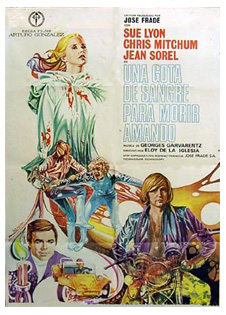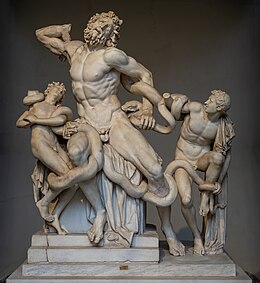
Stanley Kubrick was an American filmmaker and photographer. Widely considered one of the greatest filmmakers of all time, his films were nearly all adaptations of novels or short stories, spanning a number of genres and gaining recognition for their intense attention to detail, innovative cinematography, extensive set design, and dark humor.
Genre is any style or form of communication in any mode with socially-agreed-upon conventions developed over time. In popular usage, it normally describes a category of literature, music, or other forms of art or entertainment, based on some set of stylistic criteria Often, works fit into multiple genres by way of borrowing and recombining these conventions. Stand-alone texts, works, or pieces of communication may have individual styles, but genres are amalgams of these texts based on agreed-upon or socially inferred conventions. Some genres may have rigid, strictly adhered-to guidelines, while others may show great flexibility.

A genre of arts criticism, literary criticism or literary studies is the study, evaluation, and interpretation of literature. Modern literary criticism is often influenced by literary theory, which is the philosophical analysis of literature's goals and methods. Although the two activities are closely related, literary critics are not always, and have not always been, theorists.

American Psycho is a novel by American writer Bret Easton Ellis, published in 1991. The story is told in the first-person by Patrick Bateman, a wealthy, narcissistic, vain Manhattan investment banker who supposedly lives a double life as a serial killer. Alison Kelly of The Observer notes that while "some countries [deem it] so potentially disturbing that it can only be sold shrink-wrapped", "critics rave about it" and "academics revel in its transgressive and postmodern qualities".
Mimesis is a term used in literary criticism and philosophy that carries a wide range of meanings, including imitatio, imitation, nonsensuous similarity, receptivity, representation, mimicry, the act of expression, the act of resembling, and the presentation of the self.

An art film, art cinema, or arthouse film, is typically an independent film, aimed at a niche market rather than a mass market audience. It is "intended to be a serious, artistic work, often experimental and not designed for mass appeal", "made primarily for aesthetic reasons rather than commercial profit", and containing "unconventional or highly symbolic content".

The Black Arts Movement (BAM) was an African American-led art movement that was active during the 1960s and 1970s. Through activism and art, BAM created new cultural institutions and conveyed a message of black pride. The movement expanded from the incredible accomplishments of artists of the Harlem Renaissance.
Ethnopoetics is a method of recording text versions of oral poetry or narrative performances that uses poetic lines, verses, and stanzas to capture the formal, poetic performance elements which would otherwise be lost in the written texts. The goal of any ethnopoetic text is to show how the techniques of unique oral performers enhance the aesthetic value of their performances within their specific cultural contexts. Major contributors to ethnopoetic theory include Jerome Rothenberg, Dennis Tedlock, and Dell Hymes. Ethnopoetics is considered a subfield of ethnology, anthropology, folkloristics, stylistics, linguistics, literature and translation studies.

Homoeroticism is sexual attraction between members of the same sex, including both male–male and female–female attraction. The concept differs from the concept of homosexuality: it refers specifically to the desire itself, which can be temporary, whereas "homosexuality" implies a more permanent state of identity or sexual orientation. It has been depicted or manifested throughout the history of the visual arts and literature and can also be found in performative forms; from theatre to the theatricality of uniformed movements. According to the Oxford English Dictionary, it is "pertaining to or characterized by a tendency for erotic emotions to be centered on a person of the same sex; or pertaining to a homo-erotic person."

A Clockwork Orange is a 1971 dystopian crime film adapted, produced, and directed by Stanley Kubrick, based on Anthony Burgess's 1962 novel of the same name. It employs disturbing, violent images to comment on psychiatry, juvenile delinquency, youth gangs, and other social, political, and economic subjects in a dystopian near-future Britain.
Graphic violence refers to the depiction of especially vivid, brutal and realistic acts of violence in visual media such as film, television, and video games. It may be real, simulated live action, or animated.
Rape and revenge, or rape-revenge, is a film subgenre characterized by an individual enacting revenge for rape or other sexual acts committed against them. Rape and revenge films are commonly horror films, thrillers, or vigilante films.
New Extreme Films describes a range of transgressive films made at the turn of the 21st century that sparked controversy, and provoked significant debate and discussion. They were notable for including graphic images of violence, especially sexual violence and rape, as well as explicit sexual imagery.

Camera Works: Photography and the Twentieth-Century Word is a work of literary and cultural studies by Michael North, a professor of English at UCLA. It is the winner of the 2006 Modernist Studies Association Book Prize.

Stanley Kubrick's A Clockwork Orange is a soundtrack album released in 1972 by Warner Bros. Records, featuring music from Stanley Kubrick's 1971 film A Clockwork Orange. It includes pieces of classical music and electronic music by American composer and musician Wendy Carlos, whom Kubrick hired to write the film's original score. Music that Carlos recorded for the film that remained unreleased, including complete tracks, was released three months later on her album Walter Carlos' Clockwork Orange.

Murder in a Blue World is a 1973 Spanish-French dystopian science fiction/crime/horror film directed by Eloy de la Iglesia and starring Sue Lyon, Christopher Mitchum and Jean Sorel.

The representation of gender in horror films, particularly depictions of women, has been the subject of critical commentary.

A list of books and essays about Stanley Kubrick and his films.
David Jhave Johnston is a Canadian poet, videographer, and motion graphics artist working chiefly in digital and computational media,. and a researcher at the Center for Digital Narrative at the University of Bergen. This artist's work is often attributed, simply, to the name Jhave.

Jade Ladder: Contemporary Chinese Poetry is a 2012 anthology of contemporary Chinese poetry translated into English. The collection contains more than 200 poems from 53 poets. Nearly half are previously published English translations recommended by Chinese poet Yang Lian and the poet-critic Qin Xiaoyu, while the rest are new translations by Brian Holton. Native Cantonese and Chinese speaker Lee Man-Kay also contributed to the anthology.















